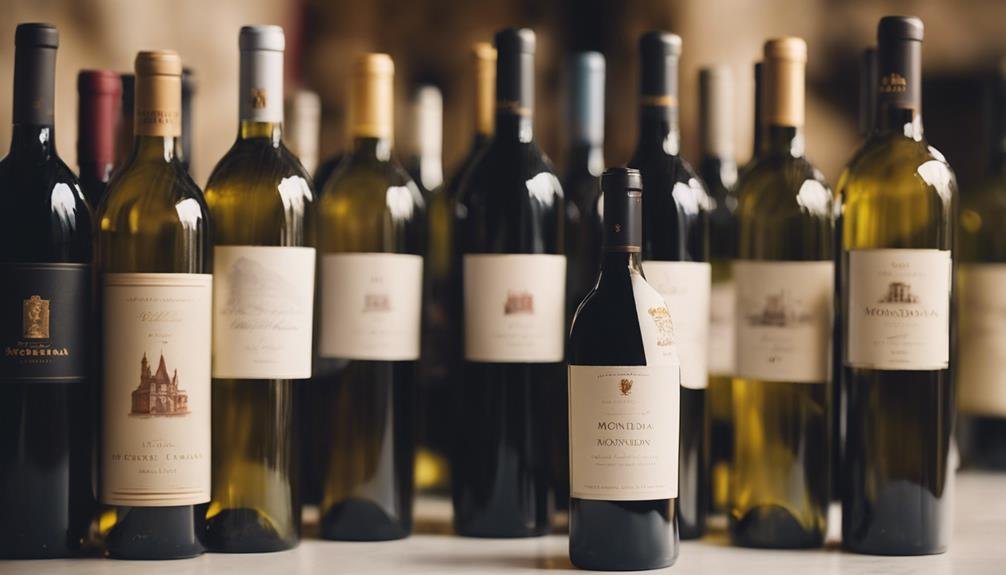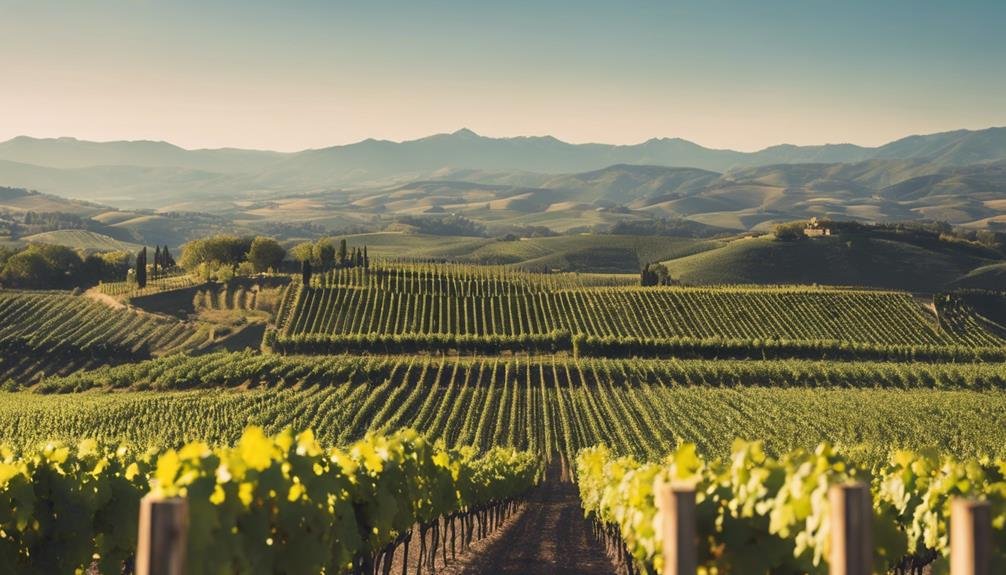Explore the diverse wine regions of the US, France, Italy, and Spain. The United States boasts 242 AVAs, unlike the hierarchical AOC system in France with over 360 AOCs. Italy shines with 329 DOCs, emphasizing regional uniqueness, while Spain's 79 DOPs showcase its rich wine tapestry. Each country employs unique regulatory systems to maintain quality. The US focuses on regional distinctiveness, France on tradition, Italy on grape varietals, and Spain on diversity. Notable personalities like Madeline Puckette further enrich the world of wine. Discover more about these captivating regions and their alluring wines.
Wine Regions Overview
With diverse systems in place around the world, understanding the wine regions' specifics is crucial for appreciating the unique qualities and characteristics of wines produced.
In the United States, the AVA system, established in 1980, boasts 242 AVAs, some spanning millions of acres. A remarkable aspect is that 85% of grapes from an AVA must be used for labeling. Unlike France's AOC system, where over 360 AOCs exist, the AVAs lack a hierarchy. France's AOC regulations are known for their strictness, ensuring quality and authenticity.
Italy, with its DOC system since 1963, showcases 329 DOCs and 73 DOCGs, distinguishing Italian grape varietals with the latter.
Spain's DOP system, featuring 79 DOPs and various classifications, highlights the diverse wine landscape in the country.
Regulatory Systems Comparison
In the world of wine production, the comparison of regulatory systems across different countries reveals distinct approaches to ensuring quality and authenticity in winemaking practices. Each country, such as the United States, France, Italy, and Spain, has its own set of comparative regulations governing wine production. These regulations, often based on quality standards, aim to protect the integrity of the final product.
For instance, France's AOC/AOP system and Italy's DOCG designation highlight the emphasis on quality and tradition, ensuring that wines meet specific criteria to carry these prestigious labels. In contrast, Spain's DOP system and the United States' AVA system offer alternative approaches to regulating wine production while still upholding quality standards within their respective regions.
Notable Wine Personalities

Madeline Puckette, a distinguished figure in the world of wine, has garnered prestigious accolades for her contributions to wine communication and education. Puckette, a James Beard Award winner and renowned Wine Communicator of the Year, co-founded Wine Folly – a platform aimed at helping people learn about wine through accessible and engaging content. Active on social media, Puckette continues to inspire and educate wine enthusiasts worldwide. Below is a table highlighting some key information about Madeline Puckette:
| Key Information | Details |
|---|---|
| James Beard Award | Winner |
| Wine Communicator of the Year | Achieved |
| Co-founded | Wine Folly |
| Contribution | Wine education and communication |
| Social Media Presence | Active |
Frequently Asked Questions
What Are the Key Factors Influencing the Terroir in Different Wine Regions?
Soil composition and microclimate fluctuations are essential factors shaping terroir in wine regions. The unique blend of soil types, such as limestone, clay, or slate, combined with varying temperatures, rainfall patterns, and sunlight exposure, contribute to the distinctive characteristics of wines produced in different regions.
How Do Climate Change and Sustainability Practices Impact Wine Production?
Climate change poses challenges to wine production, influencing vineyard management. Sustainable farming practices, including organic certification, prioritize soil health, biodiversity conservation, and water conservation. Monitoring carbon footprint measurement aids in climate change adaptation for a more resilient industry.
What Emerging Grape Varietals Are Gaining Popularity in Each Country?
Emerging grape varietals in each country showcase a tapestry of flavors. Unique blends and indigenous varietals captivate wine enthusiasts. From bold American hybrids to elegant French rarities, Italian classics, and Spanish treasures, diversity reigns in global viticulture.
Can You Explain the Significance of Traditional Winemaking Techniques in Modern Wine Production?
Traditional winemaking methods are the foundation of modern techniques, symbolizing winemaking evolution. Old world influence emphasizes respect for terroir and heritage, balancing tradition with innovation. Understanding traditional practices fosters appreciation for the art and science of winemaking.
How Do Wine Marketing Strategies Differ in Each Countrys Wine Regions?
Wine marketing strategies vary across countries' wine regions based on brand positioning and consumer engagement. Each nation adopts unique marketing trends and distribution channels to promote their wines effectively, reflecting the diverse cultural and regulatory landscapes within the industry.
Conclusion
To sum up, exploring the wine regions of the US, France, Italy, and Spain reveals a rich tapestry of terroirs, regulations, and renowned personalities that shape the global wine industry.
From the AVAs of the United States to the AOC/AOP of France, the DOC/DOCG of Italy, and the DOP of Spain, each country offers a unique and diverse landscape for wine enthusiasts to discover and enjoy.
The world of wine is truly a timeless voyage through history, culture, and taste.
